Table of Contents
- Introduction
- Why You Need a Portfolio Website
- Common Myths About Building Websites
- Step 1: Choose a No-Code Website Builder
- Step 2: Get a Domain Name
- Step 3: Choose a Template or Theme
- Step 4: Customize Your Portfolio Pages
- Step 5: Optimize for Mobile and SEO
- Step 6: Add Your Work and Content
- Step 7: Connect Contact Forms and Social Media
- Step 8: Publish and Promote Your Website
- Bonus Tips for a High-Converting Portfolio
- Final Thoughts
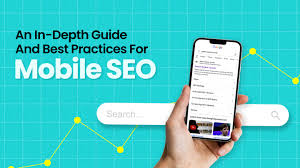
1. Introduction
Creating a portfolio website used to require knowing HTML, CSS, and design principles. But in 2025, building a sleek and professional online portfolio can be done without writing a single line of code. Whether you’re a designer, writer, developer, photographer, freelancer, or student, a portfolio website is your digital resume.
In this step-by-step guide, you’ll learn how to build a fully functional portfolio website using no-code tools that are beginner-friendly, budget-friendly, and perfect for showing off your work.
2. Why You Need a Portfolio Website
Here are some powerful reasons to build a portfolio in 2025:
- Stand out in a competitive job market
- Control your personal brand
- Showcase your best work
- Impress potential clients or employers
- Build credibility and authority
- Monetize your skills
A portfolio website isn’t just a gallery of work—it’s a marketing tool that tells your story, skills, and value.
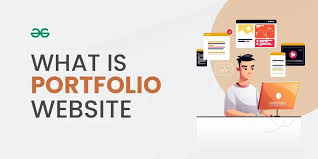
3. Common Myths About Building Websites
Let’s bust some myths:
- ❌ You need to know coding.
✅ No! With drag-and-drop builders, anyone can create stunning websites. - ❌ It’s expensive to build a site.
✅ Many tools offer free plans and templates. A custom domain can cost under ₹1000/year. - ❌ It takes weeks to build a site.
✅ With the right tools, you can launch your portfolio in a single day!

4. Step 1: Choose a No-Code Website Builder
Here are top no-code platforms you can use in 2025:
Wix
- Drag-and-drop editor
- 800+ templates
- Great design flexibility
- Free and premium plans
WordPress.com
- Beginner-friendly (different from WordPress.org)
- Use block editor or themes
- Good for blogging + portfolios
Webflow
- More advanced (but still no code)
- Pixel-perfect design control
- Popular with designers
Carrd
- Super simple 1-page sites
- Fast and mobile-first
- Free and $19/year Pro options
Canva Websites
- Best for beginners who love Canva
- Add pages, links, and animations
- No technical skills needed
Choose a platform based on your goals: personal branding, client outreach, or creative showcase.
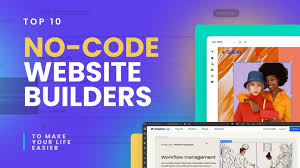
5. Step 2: Get a Domain Name
Your domain is your online address (e.g., yourname.com). While most builders offer a free domain with branding (like yourname.wixsite.com), it’s more professional to buy a custom domain.
Domain Tips:
- Keep it short and easy to spell
- Use your name or niche (e.g., saradesigns.com)
- Prefer
.com,.me, or.design - Buy through Namecheap, GoDaddy, or Google Domains

6. Step 3: Choose a Template or Theme
Templates are pre-designed website layouts that you can customize. Choose one that reflects your style and profession.
Popular Portfolio Template Types:
- Minimalistic (for designers and developers)
- Bold and visual (for artists and photographers)
- Personal branding (for coaches, writers, and consultants)
- Resume-based (for job seekers)
Tip: Focus on usability, white space, and mobile responsiveness.
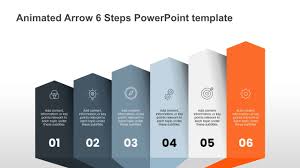
7. Step 4: Customize Your Portfolio Pages
Most portfolio sites include 4–6 key pages:
| Page | Purpose |
|---|---|
| Home | Quick intro and CTA |
| About Me | Your story and background |
| Portfolio / Work | Showcase your best projects |
| Services | What you offer |
| Blog (optional) | Share insights, SEO value |
| Contact | Email form, links, social media |
Customize with:
- Your logo or name
- Fonts and color palette that reflect your brand
- CTA buttons (like “Hire Me” or “View Portfolio”)
- Testimonials or client logos
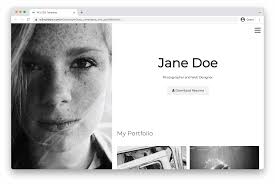
8. Step 5: Optimize for Mobile and SEO
Mobile Optimization:
- Preview your site in mobile view
- Make buttons and images responsive
- Use readable fonts and short headlines
SEO (Search Engine Optimization):
- Use clear headings (H1, H2, etc.)
- Write meta descriptions for each page
- Add alt text to all images
- Use keywords like “freelance designer in Mumbai” naturally
Tools like RankMath (WordPress) or built-in Wix SEO help beginners optimize easily.
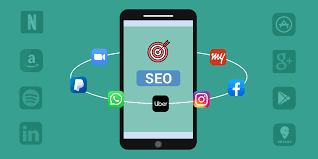
9. Step 6: Add Your Work and Content
Your portfolio should highlight your best work, not everything you’ve done.
How to Present Work:
- Use grids or galleries for images
- Add a short description of each project
- Include tools used (e.g., Figma, Photoshop, React)
- Share outcomes (e.g., “Increased conversions by 32%”)
Use case studies for a deeper dive into 2-3 top projects.
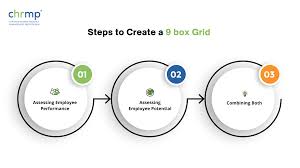
10. Step 7: Connect Contact Forms and Social Media
Make it easy for visitors to reach out.
Add:
- A contact form with fields like Name, Email, Message
- Links to your LinkedIn, Twitter, Instagram, GitHub, etc.
- Optional: Calendly or booking tools
Tip: Use anti-spam plugins or captchas to protect your form from bots.
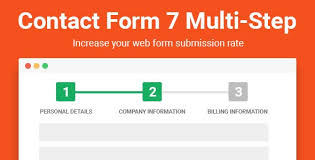
11. Step 8: Publish and Promote Your Website
Once your site looks polished:
Preview all pages
Test mobile view
Proofread your text
Check all links
Then hit Publish!
Promotion Tips:
- Add your link to social media bios
- Share your website on LinkedIn or Behance
- Include in email signature
- Submit it to portfolio showcases (e.g., Bestfolios, One Page Love)
- Create SEO blog content to get traffic

12. Bonus Tips for a High-Converting Portfolio
- Have a clear goal (hire me, view my work, book a call)
- Use simple navigation
- Show personality with photos or video intro
- Blog consistently to improve SEO
- Track performance using Google Analytics or Hotjar
- Add a newsletter form (even if you’re not ready to email yet)

13. Final Thoughts
In 2025, creating a beautiful and effective portfolio website is no longer limited to developers or designers. With today’s no-code tools, anyone can launch a professional site in a matter of hours.
If you’re ready to showcase your work, impress future employers, or land clients, there’s no better time to build your digital presence.
So what are you waiting for? Choose your platform, grab a domain, and start building your portfolio—without touching a single line of code.
